Pieter Bruegel: Peasant Life
Observational, satirical and spiritual scenes from a 16th-Century Artist
I didn’t know how to begin to approach writing a study of the art of 16th C. Flemish painter Pieter Bruegel the Elder (ca. 1526–1569), known for his vivid, unsentimental depictions of everyday peasant life in Flanders (today’s Netherlands). I will proceed on the premise that his work qualifies as visual journalism. Bruegel lived at the same time as Michelangelo and Raphael, but while they focused on grand religious themes, he painted real depictions of people with honesty, humor, and heart…with biblical references.
The 29 celebrated paintings completed in the final five years of his life teem with vignettes of rural life—scenes that elevate the mundane with quiet human dignity: weddings, labor, games, and grief. Peasants gather, farm and hunt, share meals and relieve themselves, dance at festivals, and perform their daily rituals.
But his works are not without mystery and symbolism. Bruegel was a master of embedding biblical narratives within the fabric of his own 16th-century world—layering sacred stories with the political, social, and religious tensions of his time. The Procession to Calvary, 15641, for instance, is a veiled critique of Spanish rule and the brutal suppression of Protestantism in the Netherlands.
But was Bruegel a visual journalist? His drawings hold the key. Bruegel was a keen observer of the world around him, and his graphic work reflects a deeper presence within everyday life. He traveled extensively through the Alps and Italy in the 1550s, sketching landscapes mostly. He often inscribed in his drawings with 'Naer Het Leven' or 'Studies from Life.' But these scenes are often composites with imagined villages populated with characters and drawn from his memory and imagination.
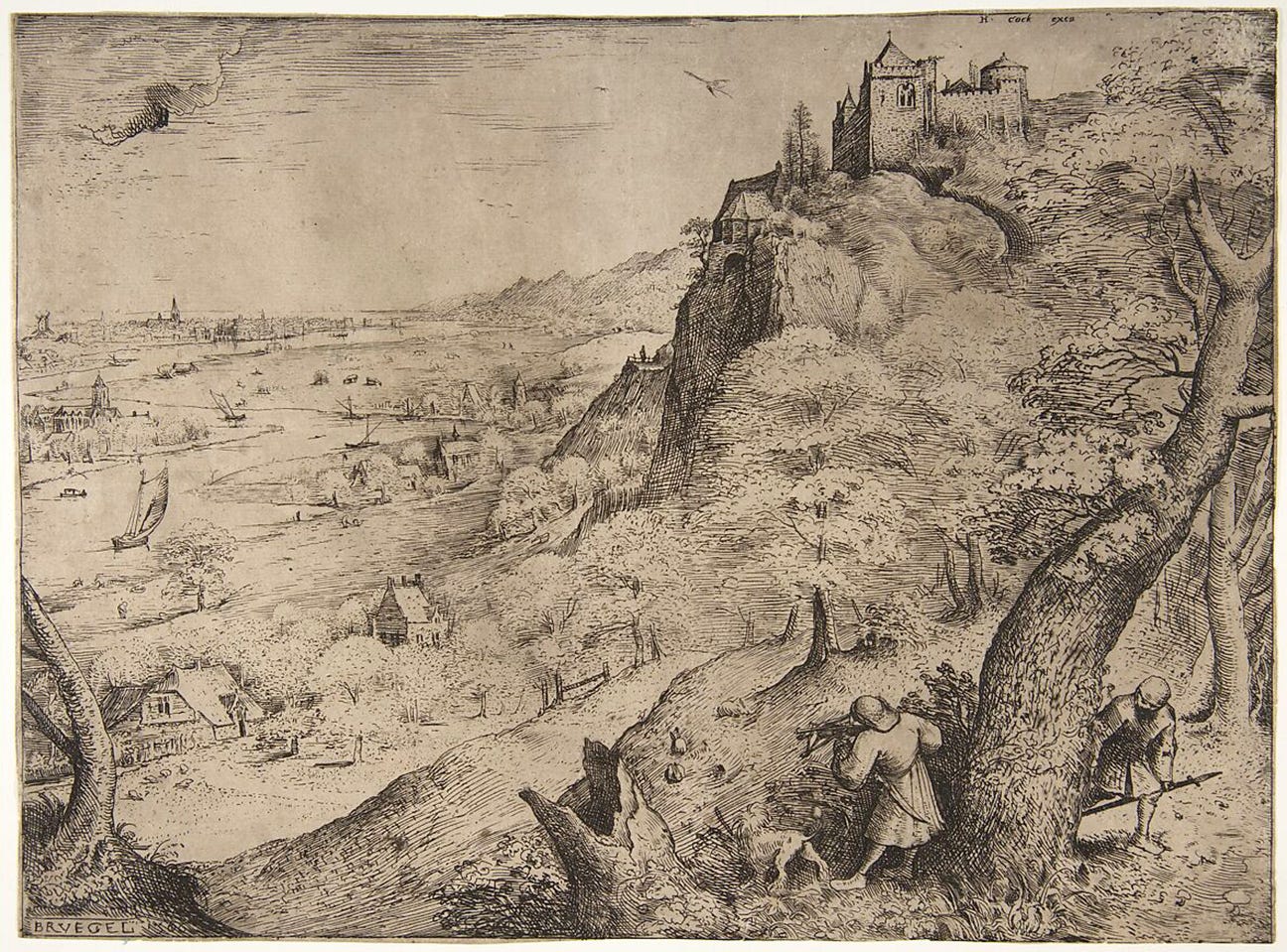
Bruegel also made allegorical drawings that were used as guides for etchings made by skilled printmakers. These works were biting, imaginative, and often moralizing. The print series’ The Seven Deadly Sins and The Virtues are based on his drawings and are filled with grotesque figures, symbolic creatures, and densely packed scenes that critiqued human folly. These prints allowed his reportage to be more widely seen.
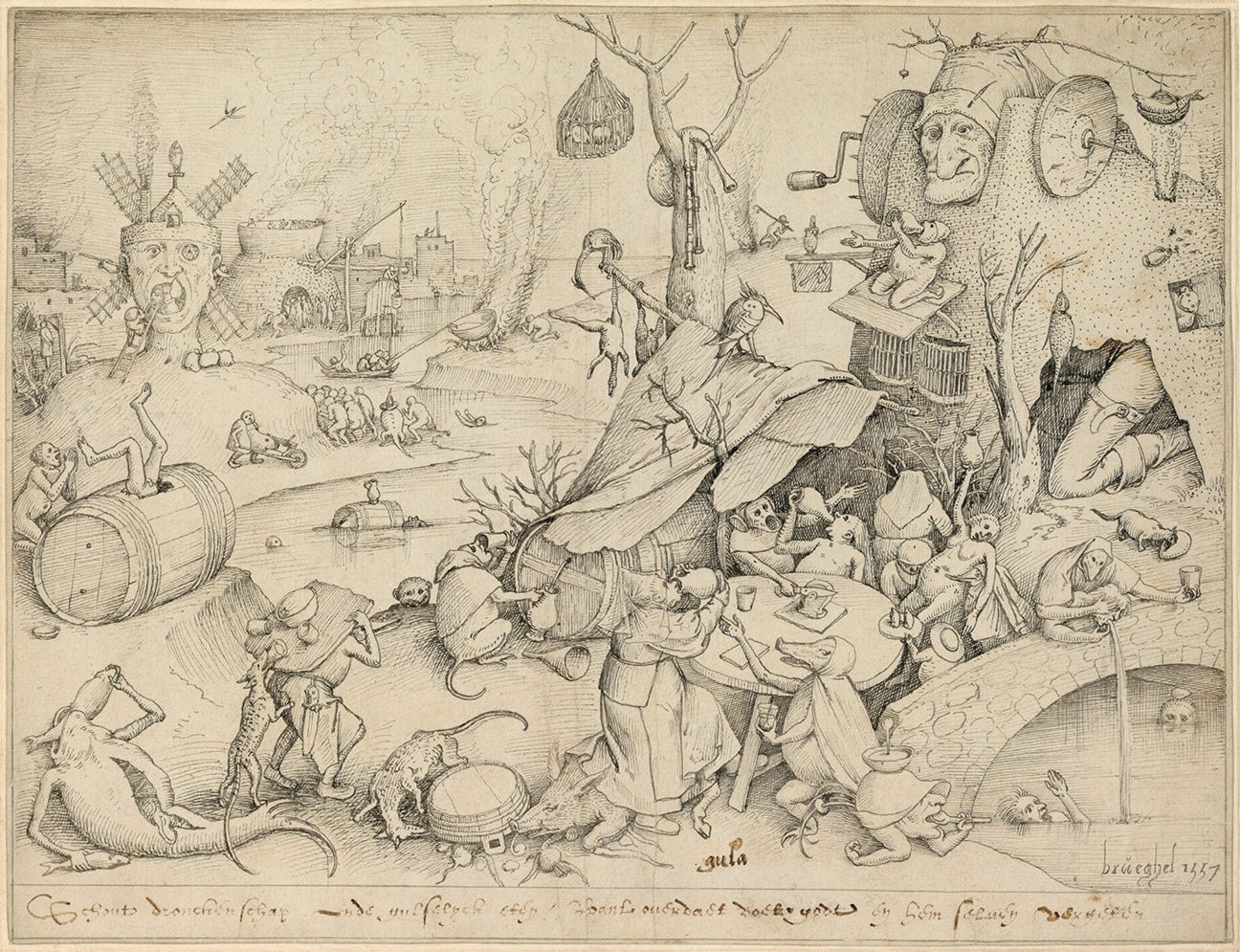
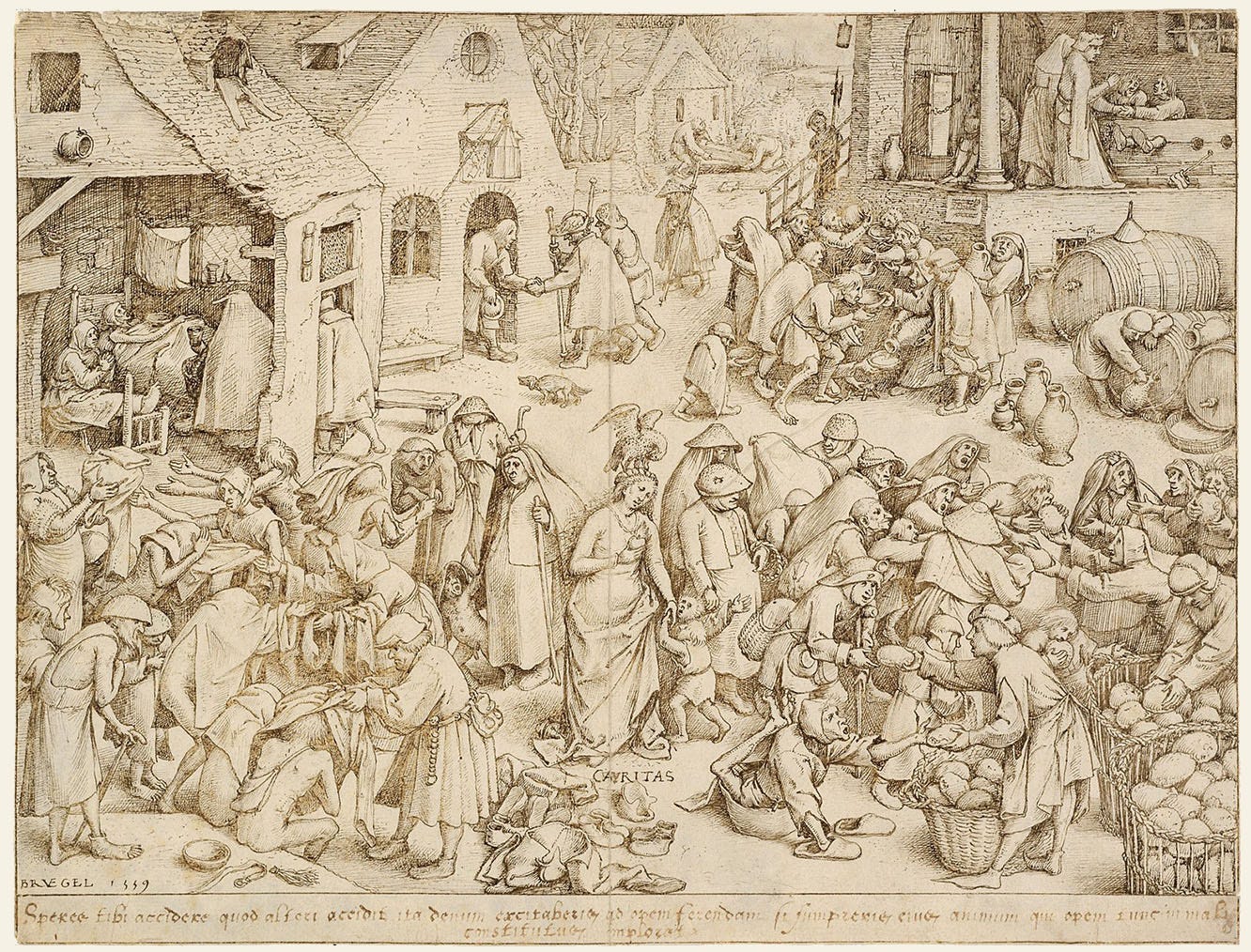
Bruegel acted as both a witness to his times and a commentator, drawing on popular narratives to create compelling scenes of daily life. He wasn’t so much a documentarian as he was a storyteller, and a beautiful one at that.
Pieter Bruegel on Film:
There is an extraordinary film, The Mill and the Cross (2011), that re-creates Pieter Bruegel’s painting The Procession to Calvary (1564). The film reimagines it as a living tableau, immersing the viewer in a bustling 16th-century Flemish landscape that teems with peasants, soldiers, children, animals and more. It also includes the execution of a Protestant man by the Spanish militia, that Bruegel himself had witnessed.

Look closely to find the biblical depictions, like Christ staggering beneath the cross and the sorrowful Mary that all seem to go unnoticed. High above, a windmill seems to suggest a divine presence. Calvary itself is in the distance, marked by torture wheels and a crowd gathering to watch the crucifixion. Bruegel’s painting bears the message that life goes on, indifferent to suffering. People can be absorbed in their own lives while missing the deeper meaning unfolding around them.
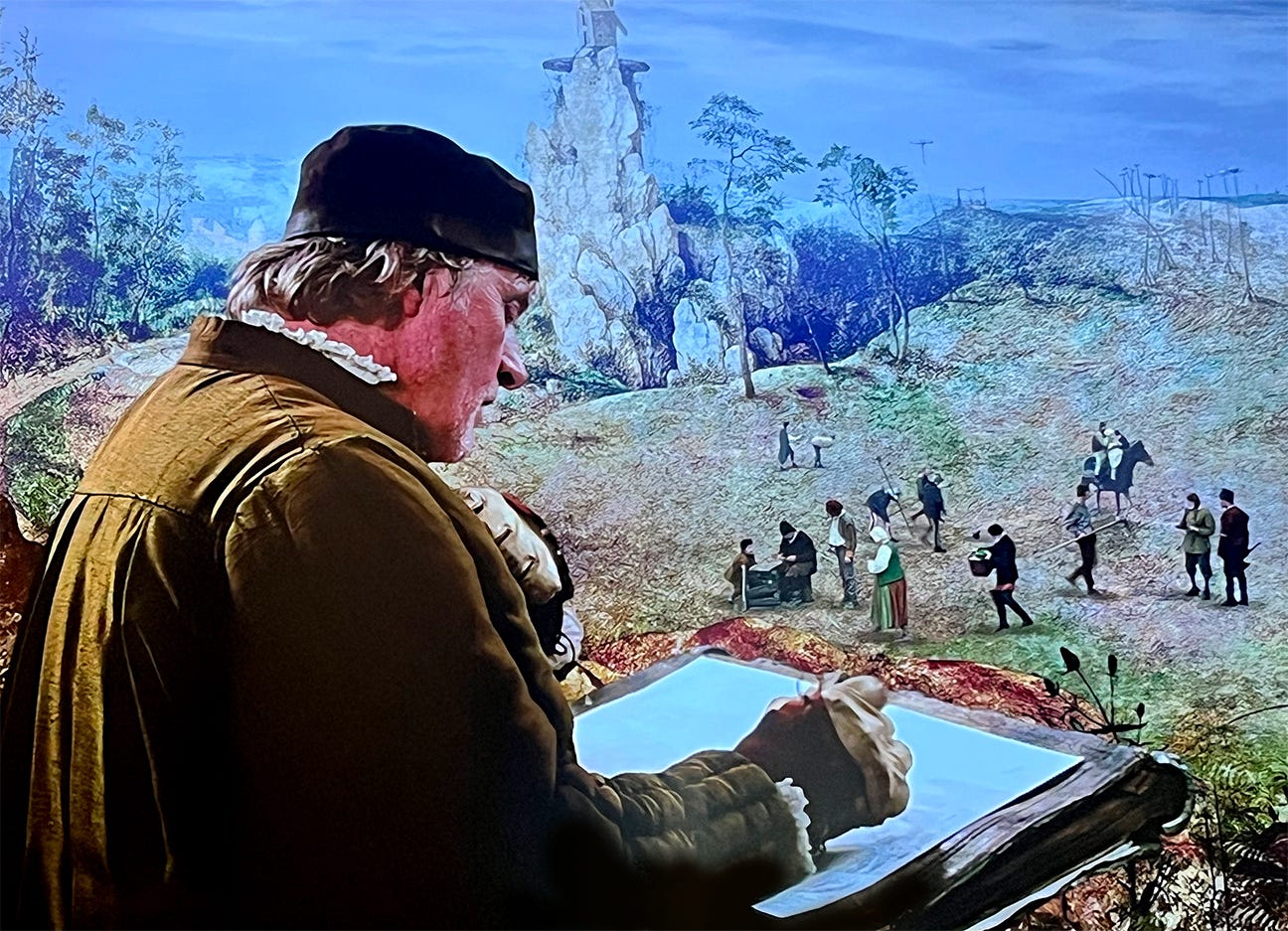
More to Know:
You can view some higher resolution images of paintings by Pieter Bruegel the Elder at Google Arts & Culture and Obelisk.
Pieter Bruegel the Elder: Drawings and Prints by Nadine M. Orenstein is available on Amazon.


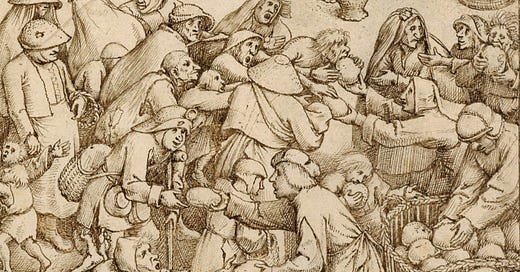



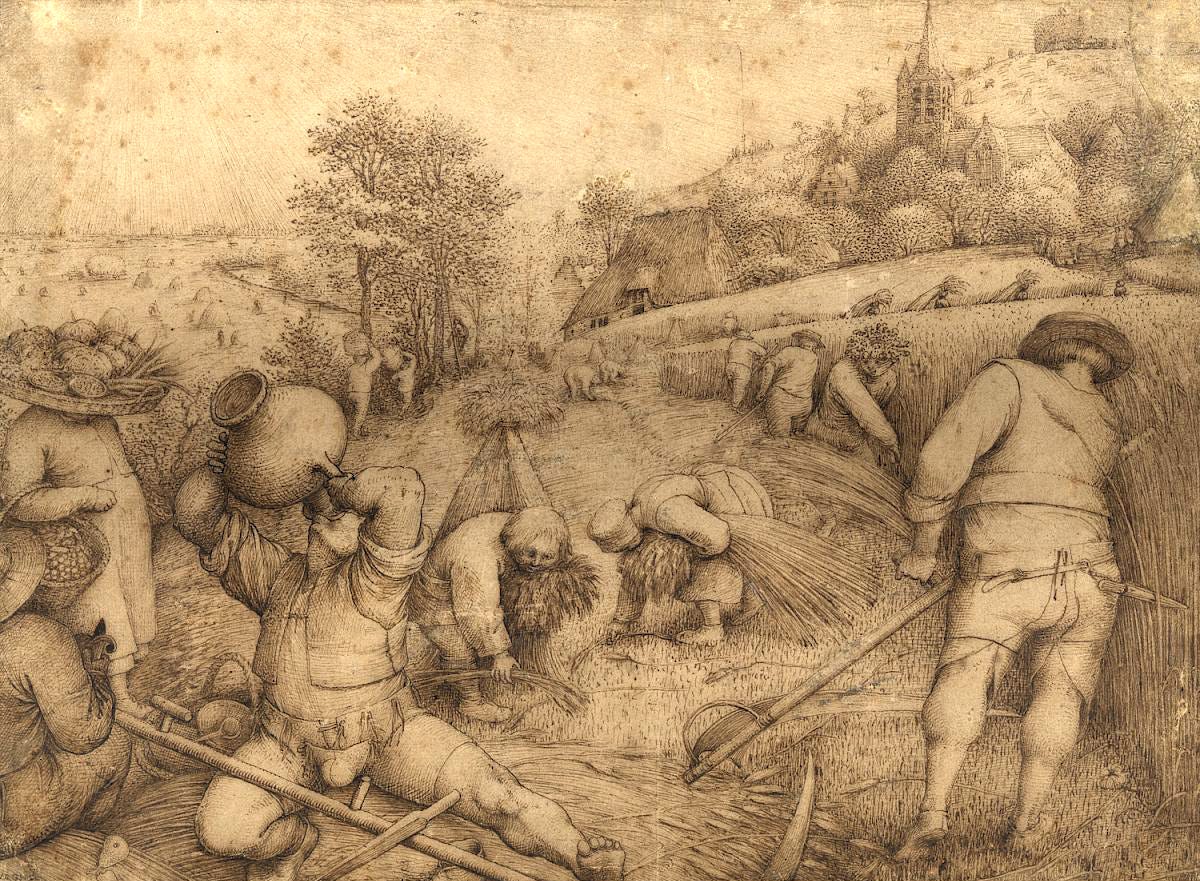
Thanks for drawing our attention to this master. The detail in these images say so much about Bruegel's powers of observation, his heart and character. In viewing "Gluttony," I got the impression that Bruegel's satirical illustrations may have been even an inspiration for Salvador Dalí: objects folded over leafless trees, the human-headed windmill, the face with the spoon and a bowl on his head extending from the hindquarters of the crocodile; these things seemed familiar.